The future fleet
The turbines of tomorrow

You may have heard about some airplanes, like the supersonic business jets, because they have been ongoing projects, drawn out over years by funding issues or technological roadblocks. Some are airplanes on the verge of certification, some are several years from entry into service, and some—well, some you wonder about. Another caveat: This issue is published concurrently with the National Business Aviation Association’s annual Business Aviation Convention and Exhibition (NBAA-BACE). This is a four-day event where manufacturers and exhibitors go all-out to promote existing products and introduce new designs with much fanfare. They go to great lengths to keep their unveilings secret, so this compilation wouldn’t include any airplanes rolled out at this event, held this year in Las Vegas from October 22 through 24.
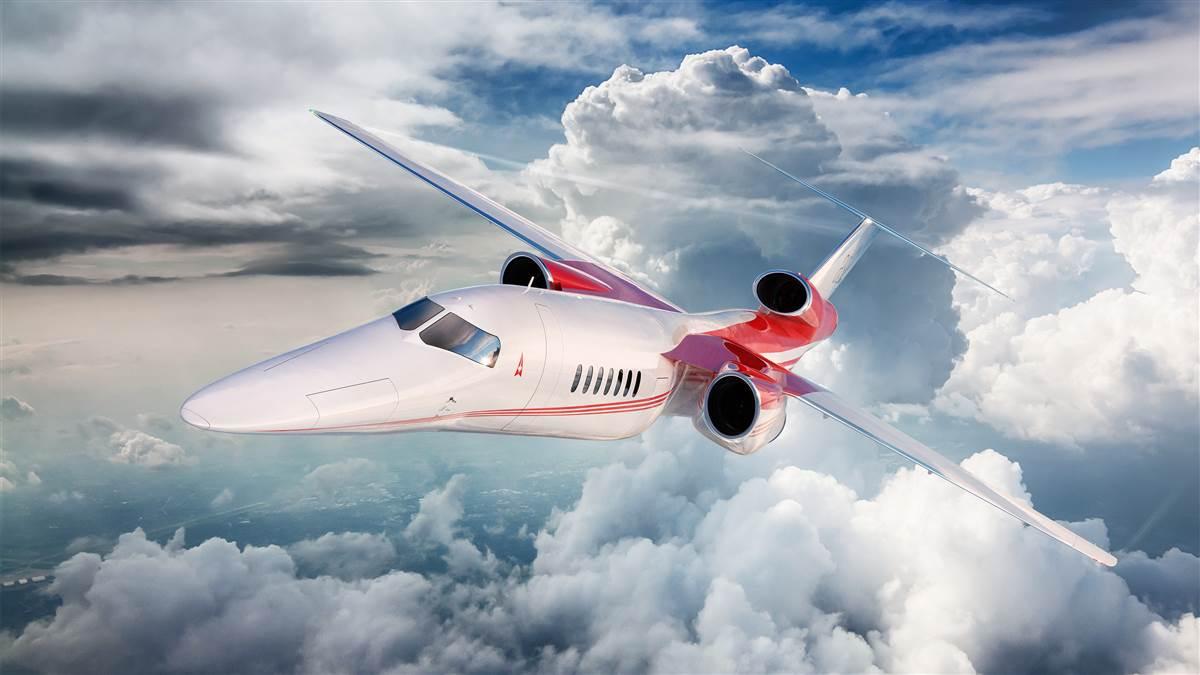
Aerion Supersonic AS2
Aerion, based in Reno, Nevada, first announced its supersonic business jet in 2004 and since then has gone through partners Airbus and Lockheed Martin, ending up with Boeing. Back then the development cost was between $1.2 billion and $1.4 billion, but now it is seen as a $4 billion program. Although Boeing’s investment amount was not discussed, AINonline reported Boeing invested several hundred million dollars for a 40-percent share of the company. The three-engine aircraft will now benefit from Boeing’s engineering, manufacturing, and aircraft flight testing capabilities.
Spirit AeroSystems of Wichita is designing the forward pressurized fuselage. The cost of the aircraft was given at $120 million in 2015 dollars.
Estimates of specifications vary widely based on which year they were made, but until a design is complete all estimates are rough guesses. The takeoff weight is estimated at 115,000 pounds. The AS2 is expected to operate at lower weights, allowing it to use runways of 5,000 to 6,000 feet. Takeoff distance is said to be 7,500 feet, while the wingspan is 77 feet and the fuselage length is 160 feet. Again, those numbers may change. You would fly the final approach at 135 knots. The empty weight of the Aerion SBJ, a model that preceded the AS2, was estimated at 45,100 pounds.
FlexJet has ordered 20 aircraft and expects to pay $2.4 billion.
The fuel capacity has been estimated at 59,084 pounds. An article in Bloomberg indicates that by the time supersonic business jets are ready, the airline industry may be well on its way toward hybrid gas-electric flight, and the public’s disapproval of gas-guzzling supersonic aircraft may have hardened.
The Aerion AS2 will not utilize low-boom technology, according to an article in Aviation Week. It was designed without an afterburner. —Alton K. Marsh
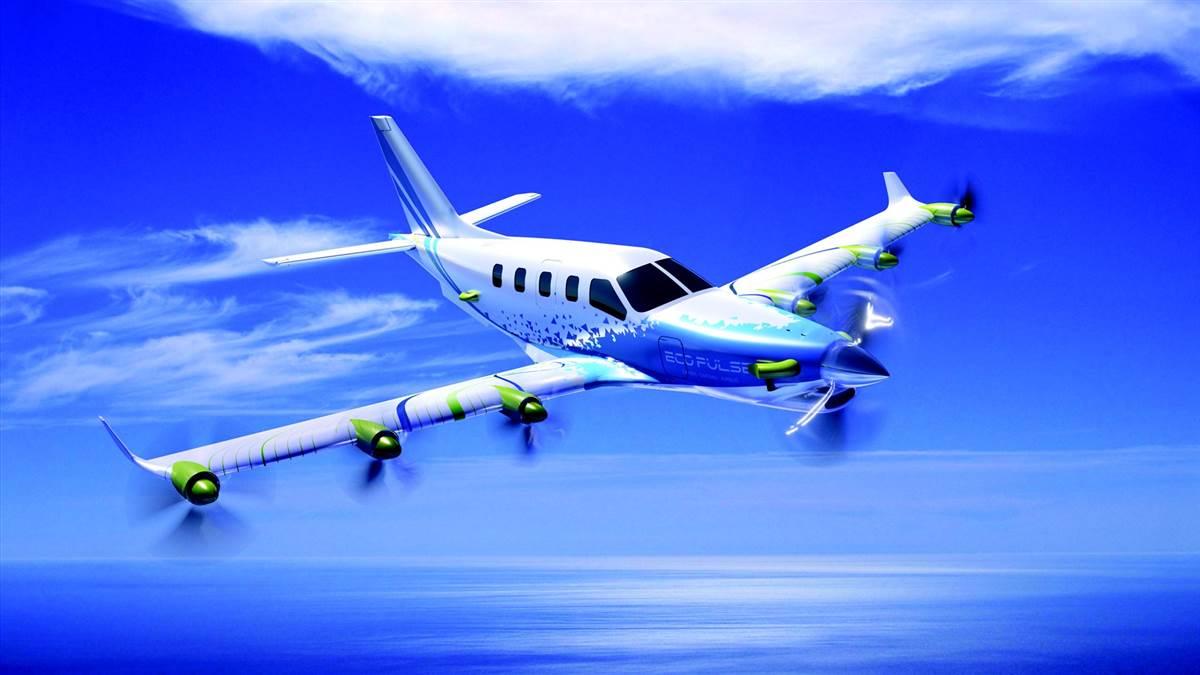
Airbus/Daher/Safran EcoPulse
If hybrid electrically powered turbine aircraft ever emerge, then the EcoPulse may help pave the way. This is a technology demonstrator only, we’re told; it won’t be offered for sale. At this year’s Paris Air Show, a display of the EcoPulse created quite the publicity churn. The EcoPulse project is a joint effort aimed at exploring the feasibility of a hybrid-powered business aircraft. It’s supported by the Research Council of the French Civil Aviation Authority. Airbus’ contribution is to perform aerodynamic analyses; Safran is developing the airplane’s hybrid power system, its power management system, and its electric motors and “e-propellers.” Daher has set aside a TBM 930 airframe to serve as the testbed, and will install the power system and perform flight testing. The idea is to use the TBM’s PT6A-66D engine for takeoffs and climbs, then engage six leading-edge-mounted electric motors for cruise power. The pilot could then choose to switch to PT6 power during the descent and landing phases. Any time the PT6 runs, it charges the EcoPulse’s batteries. It’s expected that its wingtip-mounted e-propellers will dramatically reduce wingtip vortices, thus helping to minimize induced drag. Assuming the EcoPulse makes good on its promise, it could be a responsible for a new, eco-friendly class of higher-end “turbine” aircraft.—TAH
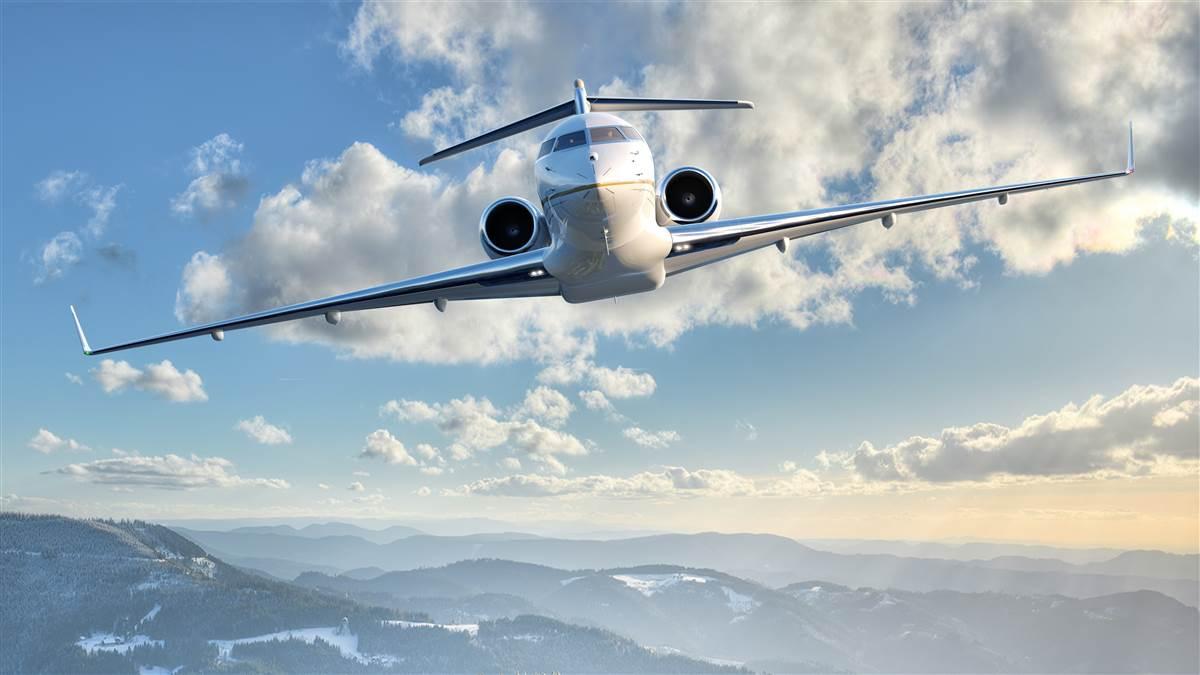
Bombardier Global 6500
Montreal, Canada-based Bombardier has added the Global 6500 to its growing line of big-cabin, long-range business jets. It fills the niche between the company’s 6,600-nautical mile, Mach 0.89 Global 6000 and its flagship Global 7500, with a maximum range of 7,700 nm and a Mach 0.9 top speed. The Global 6500 has a newly designed cabin and interior, with three living spaces and a galley with new cabinets, countertops, and a steam oven. A crew rest area has its own lavatory, and there’s an aft private suite with a berthing divan. The suite area can be ordered with a shower and large wardrobe. The Global 6500’s Bombardier Vision cockpit comes with a combined vision head-up display; the wing leading edges have been optimized for long-range flights; and its new Rolls-Royce Pearl turbofans have 9 percent more thrust than the engines used on prior Global jets, are 7 percent more fuel efficient, 2 decibels quieter, and have lower nitrogen oxide emissions than the Rolls-Royce engines used in the Global 6000.—TAH
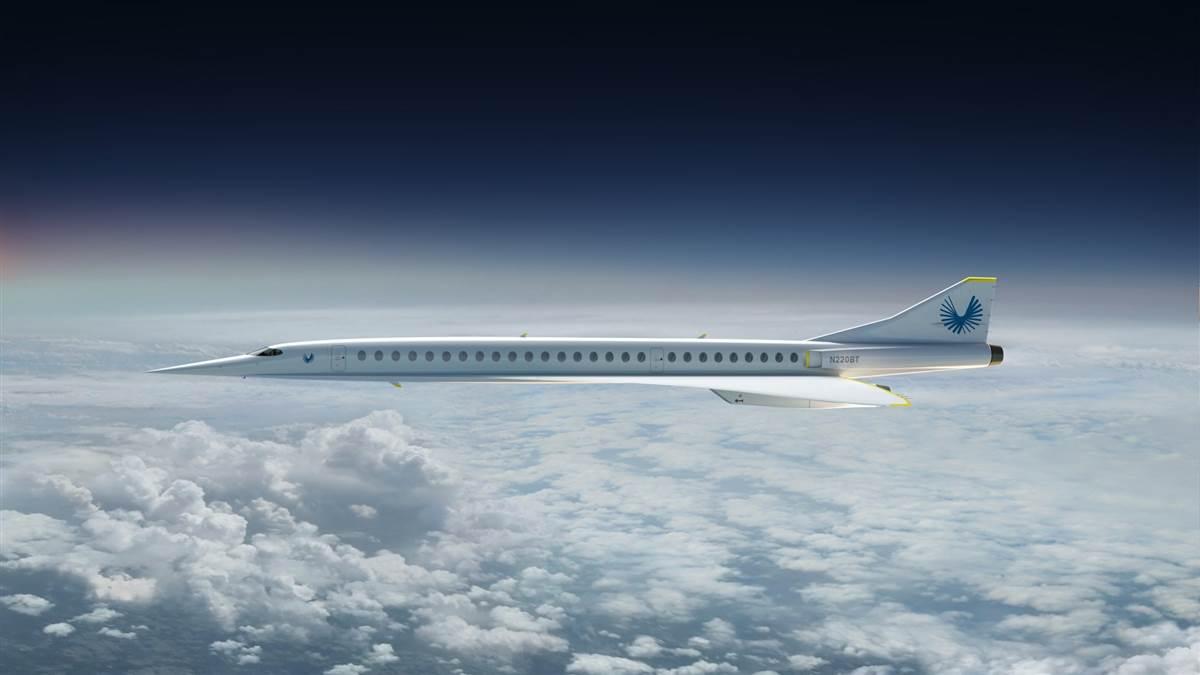
Boom Supersonic, Overture (preceded by XB–1 demonstrator)
Before Boom can go boom there must be a two-seat and three-engine XB–1 “Baby Boom” demonstrator aircraft as a sort of overture toward what is to come. What is to come is a three-engine Overture, the name of the supersonic 55- to 75-passenger airliner that Denver-based Boom is constructing. Baby Boom needed only $41 million to be developed, and since the company had raised $150 million, that part of the plan is funded plus early development of Overture. After that comes a $6 billion development effort to produce an airliner.
Baby Boom is under construction in a hangar at Centennial Airport in Englewood, Colorado, a southern suburb of Denver. The rollout of the demonstrator is to occur in December.
As supersonic flight is developing, the FAA has announced it wants to approve testing grounds over either desert or ocean where flights can be conducted. But at the same time, rising awareness of greenhouse gas contributed by aircraft and a rapidly evolving evolution in electric and hybrid-electric aircraft power is emerging. It is hoped Overture will be ready in six or seven years, but during that time there could be a greater move towards electric power, creating a public perception problem for supersonic aircraft.
So far Japan Airlines and Virgin Group are supporting Boom, with JAL contributing $10 million to the effort.
The aircraft has one-seat rows, so everyone gets a window seat and no one has to suffer in a middle seat. The wingspan is 60 feet, while the length is 170 feet.
The takeoff roll will show passengers nearly two miles of landscape, since the run for the 170,000-pound aircraft is 10,000 feet. There are no afterburners. The benefit from that is less noise and less greenhouse gas emission.
Boom Supersonic engineers in past careers directed engineering of the SpaceX Falcon 9’s second stage, designed propulsion aerodynamics for a hypersonic military vehicle, and developed the autopilot control law for the Boeing 787. —AKM
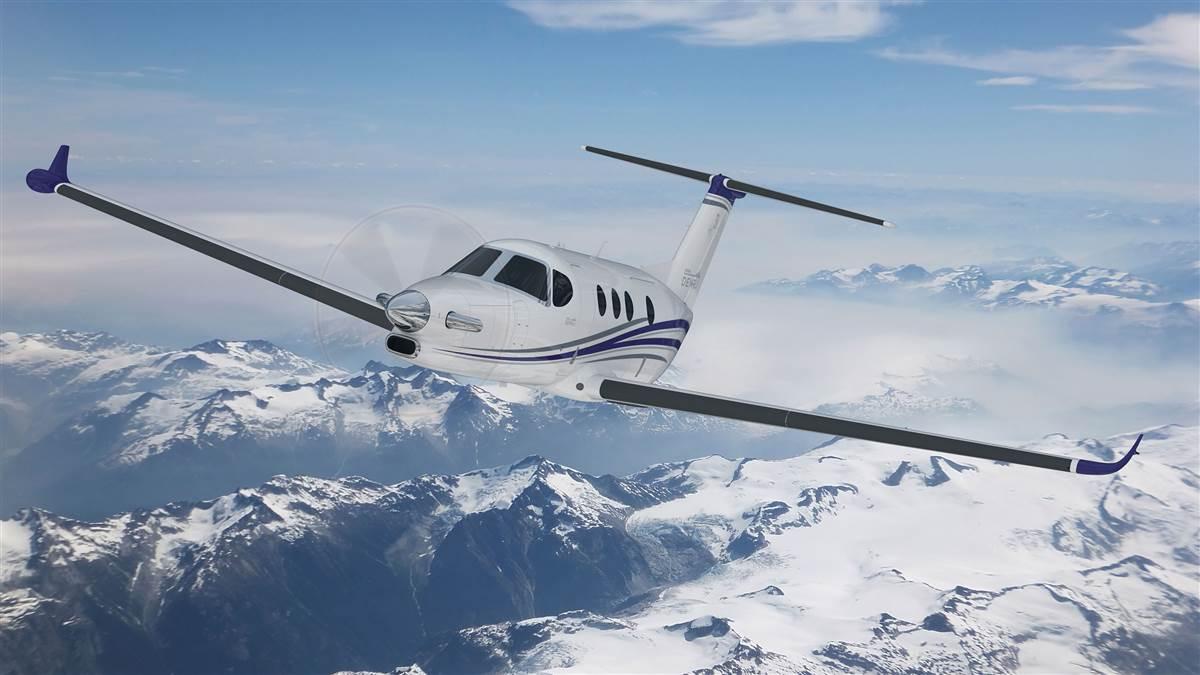
Cessna Denali
The Cessna Denali from Textron Aviation is a single-engine turboprop aimed directly at the Pilatus PC–12NG. Its cabin and exterior dimensions are nearly the same, and like the PC–12 it has a forward entry airstair door and large aft cargo door. But the Denali has features new to the single-engine turboprop market. Its clean-sheet engine—the 1,300-shp GE Catalyst turboprop—is manufactured using 3-D, additive printing for reduced parts count, lighter weight, more efficient production, and increased fuel economy. GE says the Catalyst engine would require 855 parts using conventional manufacturing processes; with 3-D printing this is reduced to just 12 components. The Denali cockpit will feature Garmin’s G3000 avionics suite and full authority digital engine controls (FADEC) for precise engine management, and a single-lever power control. The cabin can be configured for a six-seat executive interior with a large aft cargo volume, or with an 11-seat, high-density floor plan. There’s also a reconfigurable refreshment center; electrical outlets and charging ports at each seat position; and an optional, externally serviceable aft lavatory with pocket doors. Textron says certification and first deliveries should happen in late 2019.—TAH
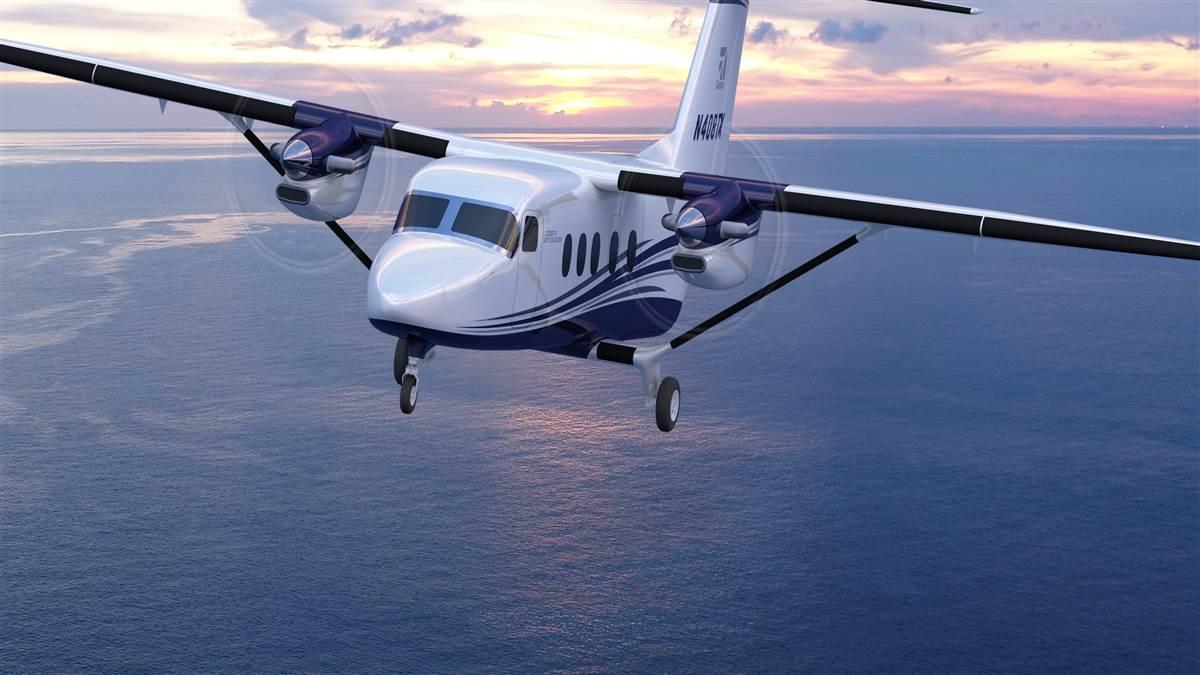
Cessna SkyCourier 408
This turboprop twin is meant to serve as either a cargo-hauler or high-density passenger transport. In the cargo variant, up to three LD3 shipping containers can be loaded into the cabin through the Cessna SkyCourier’s large (7 feet 3 inches by 5 feet 9 inches) aft door; a system of floor rollers helps move containers into place. Up front, a pilot entry door is at either side of the cockpit. In the passenger model, there’s overhead and under-seat storage space plus baggage space in the aft cargo area. Although outwardly similar in mission, the SkyCourier is a more purpose-built airplane than another Cessna boxy load-hauler, the Caravan EX. The latter’s Oasis interior option turns the airplane into a comfy cabin for 10, complete with leather seats and wood paneling. So far, the SkyCourier doesn’t appear to offer such an option.—TAH

Dassault Falcon 6X
Until 2018, the Falcon 6X wasn’t meant to be. Initially, Dassault Aviation planned for its Falcon 5X to be the next to join the Falcon line. But a series of setbacks in tests of the 5X’s Safran Silvercrest engines brought an end to that program, and a Dassault lawsuit against Safran for failure to meet its contractual obligations. (The Silvercrest debacle had repercussions beyond Dassault’s cancellation of the 5X program. Textron Aviation/Cessna’s planned large-cabin Hemisphere twinjet was to have used the Silvercrest engines, and it, too, was canceled.)
After the Silvercrest episode, Dassault chose the 6X as a 5X replacement. It will have a bigger cabin and longer range than the 5X would have had. Design work on the 6X actually began several months before its announcement, when problems—surging of the high-pressure compressor at high altitudes and angles of attack—with the Silvercrest engines first surfaced.
The 6X will be the latest addition to the Falcon lineup and will have two Pratt & Whitney PurePower PW812D geared turbofan engines of 13,000 to 14,000 pounds of thrust. The 6X will be noteworthy for its tall (6 feet 6 inches) and wide (8 feet 6 inches) cabin—the widest of all the Falcons—and its 5,500-nm maximum range. Although this is 1,000 nm less than the flagship Falcon 8X, the 6X has the advantage of having the same Mach 0.9 top speed and seating capacity as its 7X and 8X stablemates. The 6X will have 300 nm more range than the 5X, and its spacious interior will allow customers to avail themselves of a larger aft lounge area—or choose between a forward crew rest area or expanded galley. First 6X deliveries are set to take place in 2022. —TAH
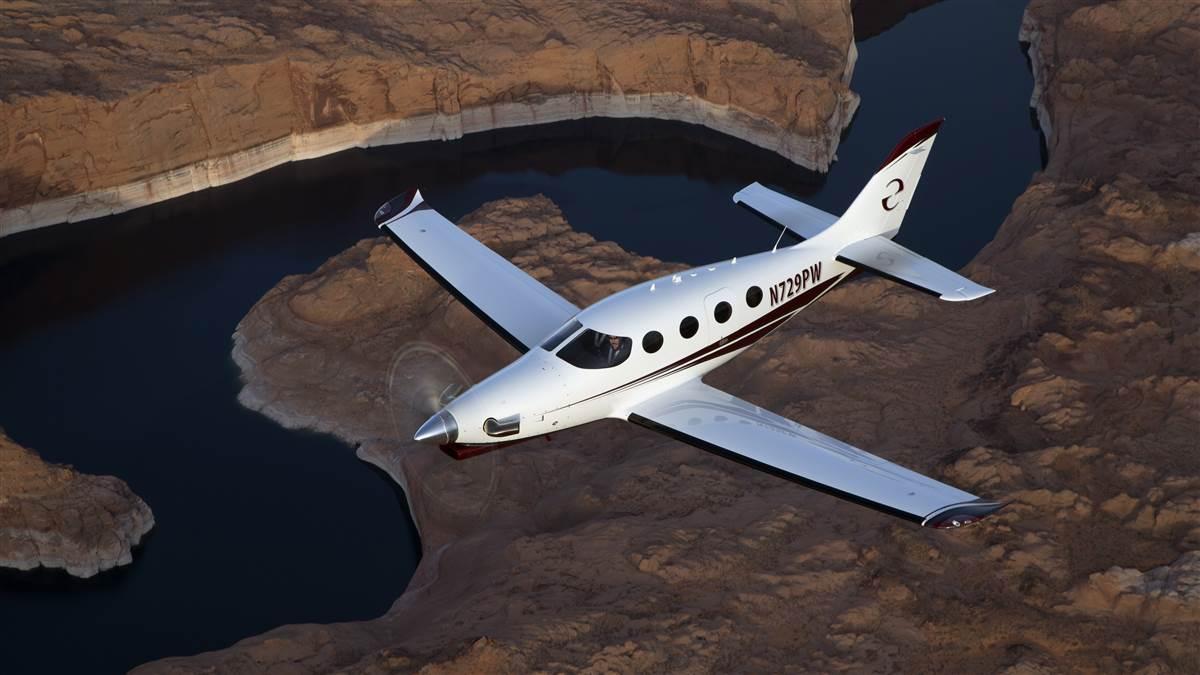
Epic E1000
The Epic E1000’s roots were as a single-engine turboprop kitplane, dubbed the Epic LT. The LT project, begun in 2003, created plenty of enthusiasm owing to its carbon fiber construction, 1,200-shp Pratt & Whitney engine, 320-knot maximum cruise speed, and 1,650-nm range. It was perhaps the world’s most ambitious—and expensive ($1.95 million)—kit-built airplane and some 60 sales were recorded. However, Epic Aircraft went bankrupt and ultimately was bought by a Russian firm, Engineering LLC, which sought to earn the LT FAA certification as the E1000. After several delays, the E1000 had earned its Type Inspection Authorization in July 2019, which allowed flight testing to begin. First deliveries were to begin by the end of 2019 but may well slip to 2020 owing to delays created by the FAA’s certification review of the Boeing 737 Max. So far, more than 85 orders have been placed.—TAH

Spike Aerospace S–512 Quiet Supersonic Jet
Vik Kachoria has the right background for building a supersonic airplane: investment banking, math, physics, and even planetary science for NASA. It’s been a long run to bring the S–512 to market. The Boston entrepreneur got a “crazy idea” for it in 2006 but got serious in 2013, when he brought in engineers to make it happen.
Four concept designs were followed by the current detailed design. One design had a high sonic boom, but that was redesigned to an aircraft with a low boom. When he talked to potential customers, Kachoria discovered they didn’t need to travel much over water, where a sonic boom would be permitted. They wanted routes over land, where sonic booms are difficult to manage much above Mach 1.2.
The next step was to continue to negotiate with engine manufacturers for two 20,000-pounds-thrust engines. Kachoria had hoped to announce an engine manufacturer by now. When negotiations are completed, he will announce a site for a factory and pick up the pace, adding to his current group, many off site, of 51 engineers. It won’t be inexpensive. He is still pulling investors together.
Kachoria says the total program will be in the billions of dollars, and adds that certification will be a third of that cost. He hopes for certification in 2025.
The aircraft will not use afterburners; however, it still will be able to take off from 7,000-foot runways.
While a Mach 2 aircraft would be attractive to customers, it comes with high sonic boom, heating of the aircraft fuselage, and a massive fuel-burn rate.
Kachoria plans for his aircraft to have little greenhouse gas emissions and power itself to the runway with electric motors before starting the engines. He hopes that will lower public opposition. When he first proposed the aircraft, he received messages that warned he would “burn in hell” for bringing such an aircraft into the environment, he said.
He is hoping airlines will see a small supersonic jet as an add-on service for those customers who absolutely have to get there as fast as possible. —AKM

Stratos Aircraft, Stratos 716X
Originally this personal business jet was called the 714 and was flown for the first time in 2016. Then it was shown to customers. Although they liked the airplane, they thought there was not enough room inside, so the 716 was designed with a roomier interior. It has the same wing, but the cabin pressure vessel is 31 inches longer, and there are two additional inches between seats. The cabin is 5 feet wide and 4.8 feet high. The tail was lengthened 21 inches for better stability. The nose of the 714 was used for systems but with the larger 716 it can now be used for baggage.
It was decided the best way to proceed from a cash-flow standpoint—and as a way to further refine the aircraft—was to sell it first as a kit at the rate of no more than three a year. There are two reasons for going with kits first: Revenue can begin to flow, and customers can shorten their wait for the aircraft. Stratos officials have said in the past they have no interest in becoming a kit company.
There is currently one kit in production for a customer. It is called the 716X, for Experimental. The factory-built, certified 716 will emerge about four years after a new investor is found. An older certification estimate pegged the cost at $200 million, but the company is working to update the estimate.
Introduced in 2008, the aircraft is to take off in 2,270 feet and land in 2,220 feet, yet cruise at 382 knots true airspeed. It will carry three passengers and one pilot on the longest flights, or five passengers on short-range flights. It has a service ceiling of 41,000 feet and it is anticipated that the Stratos will actually use that altitude.
The empty weight for the 716 will be 4,880 pounds. The 716 can carry 380 gallons of usable fuel. All numbers are preliminary.
There are currently funds to complete the 716X. Competitors are considered to be the Cirrus Vision Jet, the Cessna Citation M2, and the HondaJet, among others. —AKM
Propulsion of the future?
These electric designs are nosing their way into business aviation

Ampaire Electric EEL
Ampaire, headquartered at Hawthorne Municipal Airport southeast of Los Angeles International Airport, is developing a supplemental type certificate to retrofit old Cessna Skymaster 337 aircraft into hybrid ones by replacing the rear engine with an electric motor driving a propeller. The electric motor can produce the equivalent of 240 horsepower but will be limited to an equivalent 215 so the maximum power will not exceed original certification of the Skymaster. The motor can generate maximum power for five to six minutes but lasts longer at lower power settings.
The first test aircraft, a converted 1973 aircraft called the Ampaire EEL based at Camarillo Airport north of Los Angeles, used a battery installed in the rear cabin for its June 6 first flight, but later 337s will hang the battery in a cargo pod beneath the airplane to allow more room in the cabin.
While the airplane is now offered for sale to general aviation pilots, testing will take another two and a half years.
The aircraft name “EEL” refers to the sea animal, but also came from turning the two 3s in 337 backward, and rotating the 7 180 degrees vertically. The electric motor provides extra power for takeoff and may be used in flight depending on the type and length of route flown. The EEL will be flown by a Los Angeles short-hop charter company with 50 on order called Personal Airline Exchange, and demonstrated by Mokulele Airlines in Hawaii but will not carry passengers. The aircraft is a parallel hybrid, meaning its battery is not recharged by the combustion engine.
Recently announced are plans to bring hybrid power to the Cessna Caravan and Viking Twin Otter. Years down the timeline but considered the future of Ampaire electric aviation is a Tailwind model with long, glider-like wings and a ducted fan on the tail driven by batteries for short routes, and by a hybrid gasoline-electric model for longer routes. —AKM

Eviation Alice
Israeli entrepreneur Aviv Tzidon has cofounded Eviation with physicist Omer Bar-Yohay and plans to ready a nine-passenger, all-electric commuter aircraft for its first flight at Seattle-based AeroTEC’s Flight Test Center at Moses Lake, Washington. The flight is to take place by the end of 2019, although that represents a slippage from mid-2019.
Control of the company is now in the hands of a Singapore investor.
The mostly composite $4 million tailwheel aircraft runs entirely on 8,200 pounds of lithium-ion batteries powering three electric motors, two at the wing tips and one in the tail. Its takeoff weight is 13,999 pounds.
If a wingtip motor fails, the other is cut off automatically to avoid asymmetric thrust (a wild yaw), while the tail motor has the power to continue the takeoff.
The company plans to manufacture the aircraft at Prescott, Arizona, where it also joined with Embry-Riddle Aeronautical University for research and development. An early win for the company is an order from Cape Air of Barnstable, Massachusetts. The exact number of aircraft and dollar value of the order was not released. Cape Air will have the option to use Siemens eAircraft batteries or magniX batteries.
The company hopes to have the aircraft certified in 2021 and in service sometime during 2022. Certification is to be done with a single aircraft, although previous plans had called for a three-aircraft certification plan. Plans for an additional, pressurized model appear to have been scaled back.
Batteries will cost $250,000 and must be replaced every 3,000 flight hours, according to an Aviation Week article published in 2018. A South Korean company called Kokam will supply lithium-ion batteries and has previously provided batteries for Solar Impulse 2, which flew around the world. Eviation has a $1 million contract with Kokam.
An alternative battery might be available someday called an aluminum-air battery. It happens that Tzidon’s other startup company, Phinergy, makes such batteries and has listed transportation as one of the uses for the technology.
Speaking of investors, Forbes reports Eviation got $76 million from Singapore-based billionaire Richard Chandler in return for 70 percent of the company. —AKM



